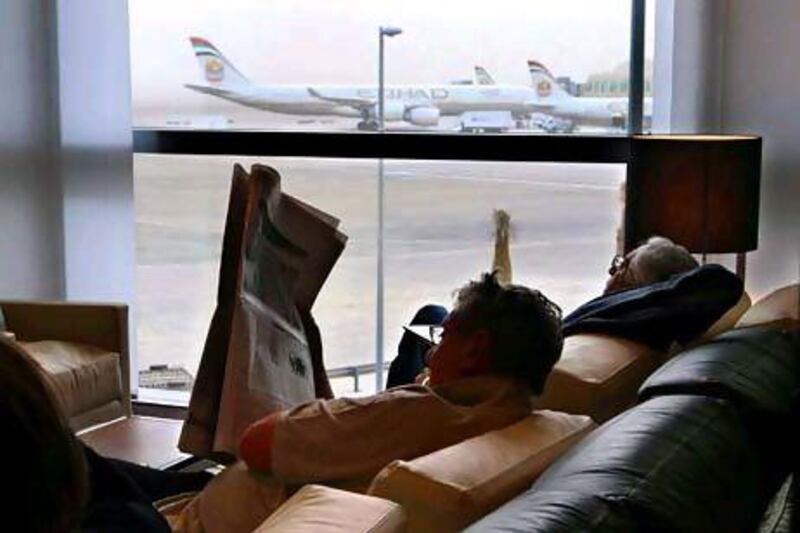A record number of more than 12 million passengers passed through Abu Dhabi International Airport last year.
More airlines and routes helped passenger traffic to grow 13.9 per cent from 2010 to 12.4 million last year, Abu Dhabi Airports Company (Adac) reported.
"Abu Dhabi is bringing on additional tourism attractions and facilities, which helps drive traffic," said James Bennett, Adac's chief executive.
"Then, of course, our partner Etihad [Airways] continues to take delivery of new aircraft and expand its route network and form partnerships with other airlines. In July 2011 and every month since then has been over a million passengers a month."
Adac expects to make an announcement on plans for its Midfield Terminal Building next week, Mr Bennett said.
It was announced on Monday that the Abu Dhabi Executive Council had approved a raft of projects, including the vast terminal building, which is designed to become home to Etihad.
The building is part of a Dh25 million (US$6.8m) to Dh27m redevelopment and expansion plan for the airport as Abu Dhabi strives to accommodate burgeoning demand.
Mr Bennett said about half of the traffic passing through the airport was transit business. Further growth was anticipated this year, although challenges remained. "I imagine that this year we will certainly exceed 13 million passengers," he said.
"We tend to be conservative in our estimates because aviation is a very dynamic business.
"We're certainly keeping a watchful eye on what's going on with the global economy. If something does transpire, that's a short-term thing. When you look at aviation, you have to look at the long term and the long-term trend here for aviation is very positive."
Airspace issues also remained a challenge for the industry in the region, Mr Bennett said.
"As aviation continues to grow in the UAE, as well as in this region, we have to keep our eyes on the airspace capacity. The airspace that we have in this region can be a challenge and it's going to need some attention," he said.
"Oman has its system; UAE has a system; Saudi has a system; Qatar has a system. It's a lot of smaller systems that have to work together to get aeroplanes in and out of the air space and that sometimes can present a challenge."
Airline companies that started flying to and from Abu Dhabi last year include Cathay Pacific, Virgin Australia, and Czech Airlines.
Eight new destinations were added, including the Seychelles, Prague, Bangalore, and Chengdu.
Etihad announced this month it had carried a record 8.29 million passengers last year, up 17 per cent on 2010.
Cargo traffic at the airport rose 10 per cent last year from 2010, reaching 481,500 tonnes.
Dubai Airportsannounced on Tuesday it had achieved a record number of almost 51 million passengers passing through Dubai International Airport.
Mr Bennett said there was room for all the major hubs in the region to grow further.
"If you look geographically where we're located and what the airlines are doing, we're taking advantage of the fastest-growing aviation markets in the world. The Indian market is one of the fastest growing aviation markets in the world, China, Asia, and Africa.
"What's happening here today is really no different than historically what's happened in places in Europe and North America over time," said Mr Bennett.
"Now these markets are emerging, the demand for air transportation is going up very, very rapidly. There's plenty of room for all of us."





